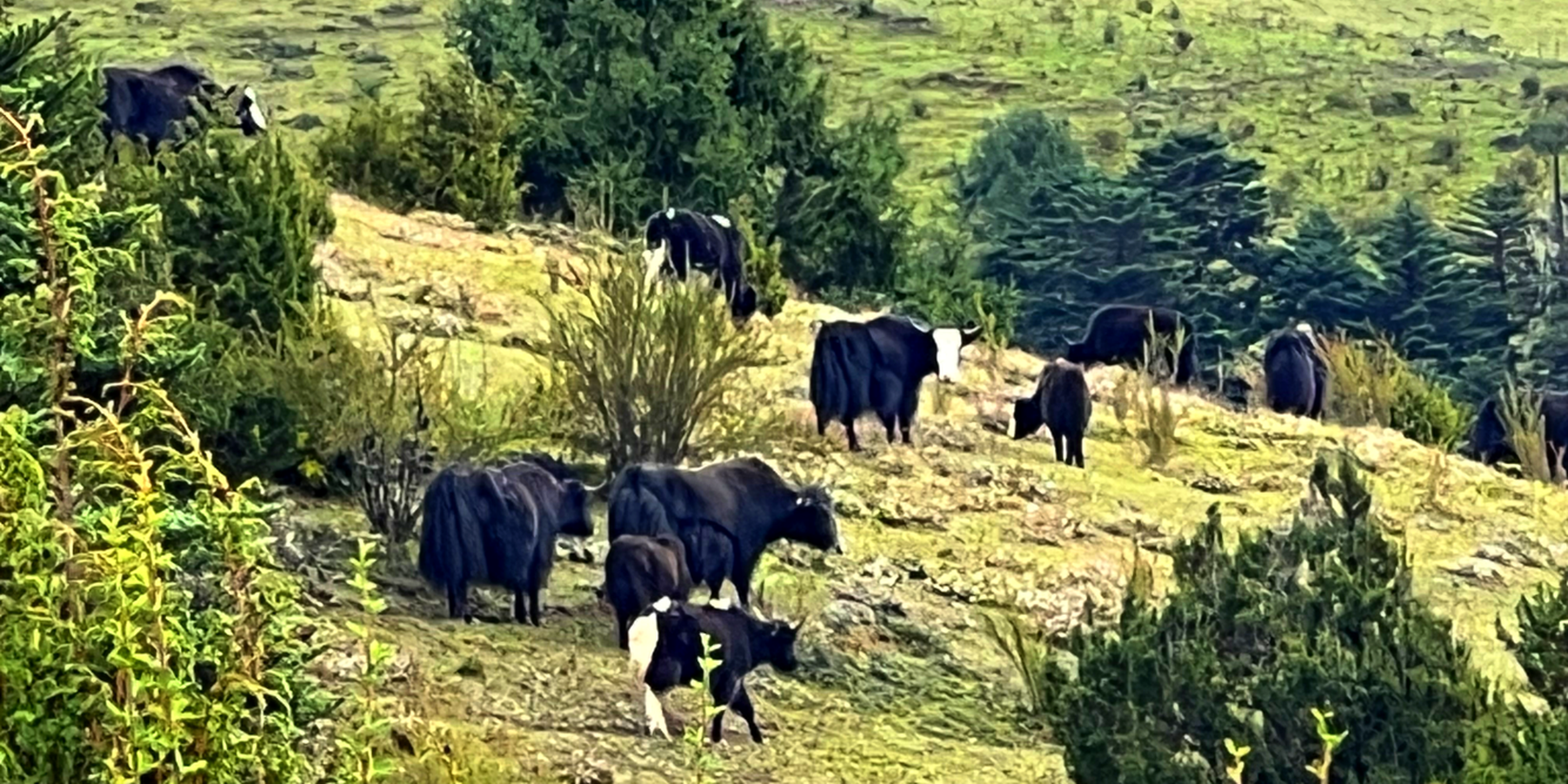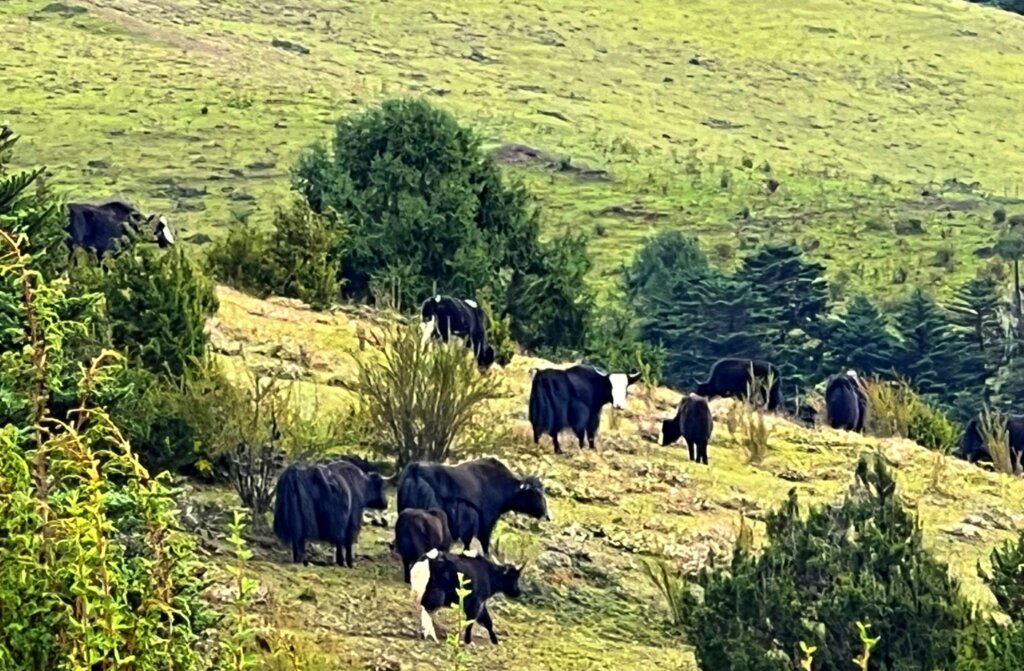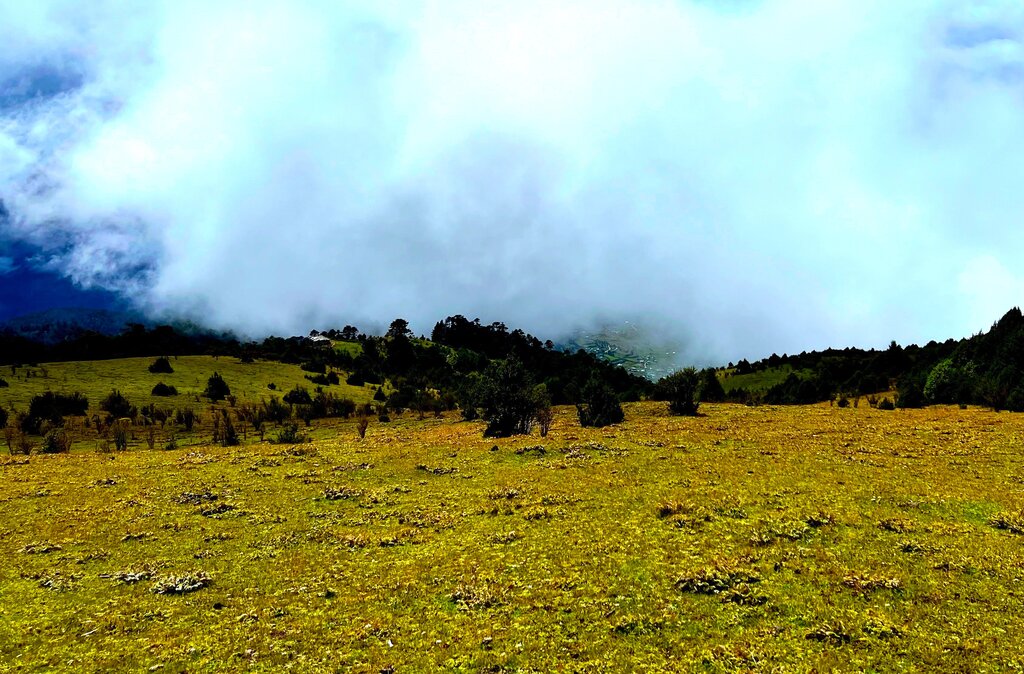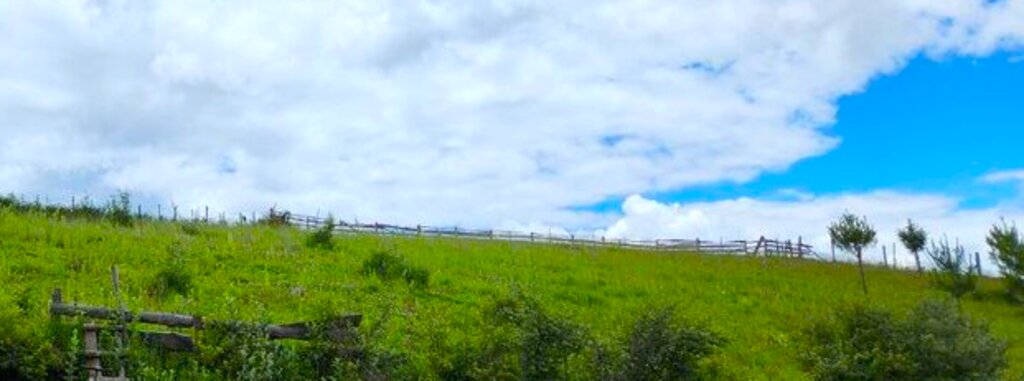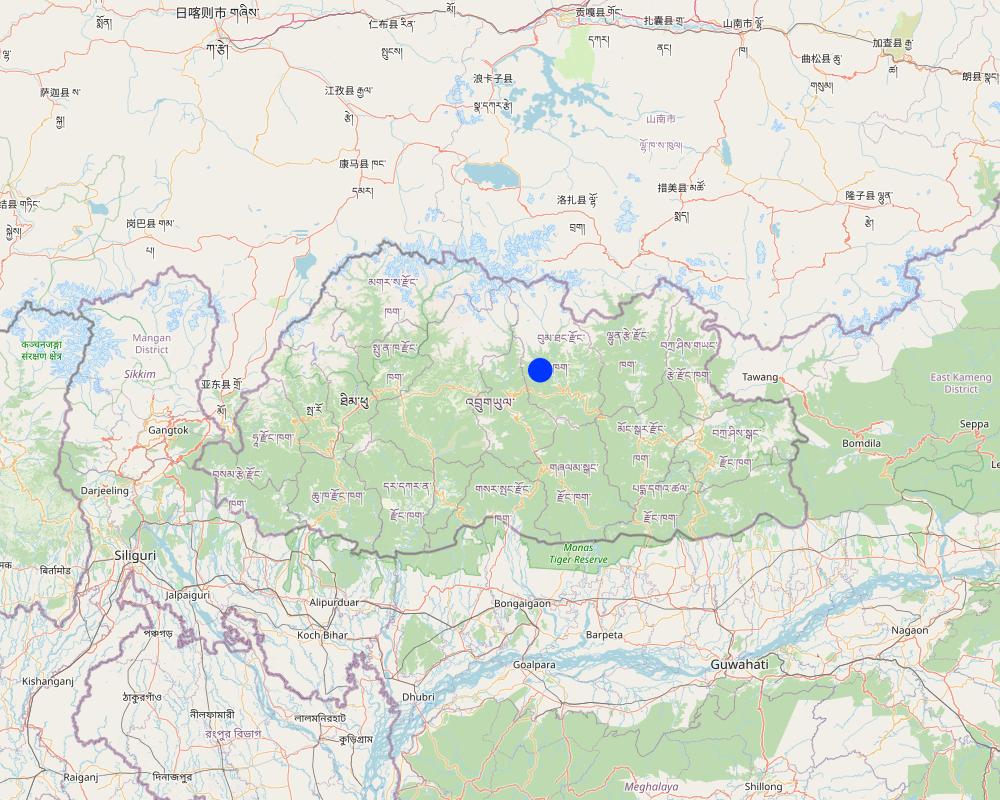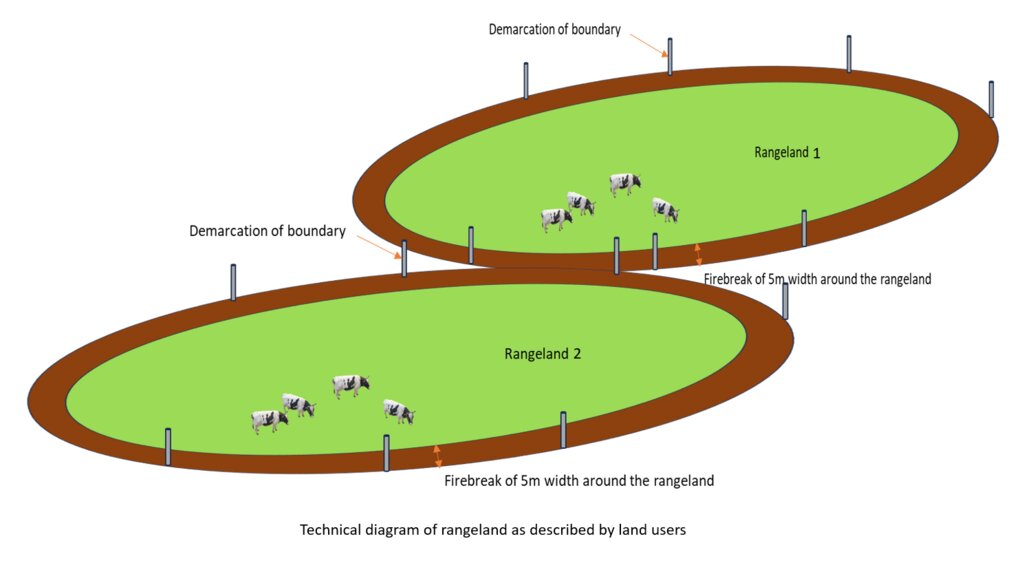Managed Burning of Rangeland [Bhutan]
- Creation:
- Update:
- Compiler: ONGPO LEPCHA
- Editor: chenga Tshering
- Reviewers: William Critchley, Rima Mekdaschi Studer
Tsamdro Mey Tshaezin Tangtey Dzinchong Baeni (ཙྭ་འབྲོག་མེ་ཚད་འཛིན་བཏང་སྟེ་འཛིན་སྐྱོང་འབད་ནི།)
technologies_6855 - Bhutan
View sections
Expand all Collapse all1. General information
1.2 Contact details of resource persons and institutions involved in the assessment and documentation of the Technology
Key resource person(s)
land user:
Phurba
Dhur community
Bhutan
land user:
Phuntsho Kelzang
Dhur community
Bhutan
Name of project which facilitated the documentation/ evaluation of the Technology (if relevant)
Strengthening national-level institutional and professional capacities of country Parties towards enhanced UNCCD monitoring and reporting – GEF 7 EA Umbrella II (GEF 7 UNCCD Enabling Activities_Umbrella II)Name of the institution(s) which facilitated the documentation/ evaluation of the Technology (if relevant)
National Soil Services Centre, Department of Agriculture, Ministry of Agriculture & Livestock (NSSC) - Bhutan1.3 Conditions regarding the use of data documented through WOCAT
The compiler and key resource person(s) accept the conditions regarding the use of data documented through WOCAT:
Yes
1.4 Declaration on sustainability of the described Technology
Is the Technology described here problematic with regard to land degradation, so that it cannot be declared a sustainable land management technology?
No
Comments:
While this practice may be criticised on the basis of reducing biodiversity and leading to some GHG losses, it is an important land management practice that has certain specific benefits including making the land more productive.
2. Description of the SLM Technology
2.1 Short description of the Technology
Definition of the Technology:
Burning of rangeland (“tsamdro”) is a traditional management practice adopted by highlanders to control unpalatable grass and shrub species. This helps them produce adequate fodder for their yaks, cattle, horses, and sheep by creating a favorable environment for palatable grasses.
2.2 Detailed description of the Technology
Description:
The practice of burning rangeland (“tsamdro”) is a longstanding tradition among highlanders, whose livelihoods depend on livestock including yaks, cattle, horses and sheep. It is mainly practiced by transhumant communities or individuals who rely on livestock for their livelihoods. They follow a migratory livestock husbandry system that takes them from the highlands to the lowlands dependent on the availability of fodder resources, while simultaneously avoiding the extremes of climate. In the past, rangeland was allocated to individuals, communities, or religious bodies through payment for a minimal annual grazing permit, granting grazing rights. When pasture was scarce, controlled fires were intentionally set in specific areas to rejuvenate the rangeland with fresh grass and control unpalatable grasses and shrubs. For instance, the transhumant nomadic communities of Dhur village, Choekhor Gewog, in Bumthang have adopted the practice of burning rangeland. This practice is implemented during the winter months, dependent on weather, vegetation status, and wind patterns. Rooted in traditional knowledge and cultural practices, the practice is slowly diminishing nowadays due to environmental concerns and labour shortages as young nomads migrate - seeking better employment in towns.
The technique serves multiple purposes. These include promoting the growth of fresh and palatable pasture rich in protein, increasing plant diversity, adding nutrients to the soil through ash, and reducing dead plant material that inhibits new plant growth. Additionally, rangeland burning contributes to the control of livestock pests, especially ticks and flies. While rangeland burning is a straightforward process, it requires careful planning of time and location, creation of fire breaks to prevent uncontrollable spread, and leaving the land fallow for 2 to 3 years after burning to encourage grass growth.
Land users appreciate the technology for reducing their workload in collecting wild fodder grasses, enhancing visibility by removing trees and shrubs, and reducing the risk of predators. However, risks include the potential for uncontrolled fires if not properly managed and harm to the ecosystem and biodiversity in and around the pastureland. Burning also contributes to the loss of carbon dioxide (a greenhouse gas) to the atmosphere.
2.3 Photos of the Technology
2.5 Country/ region/ locations where the Technology has been applied and which are covered by this assessment
Country:
Bhutan
Region/ State/ Province:
Bumthang Dzongkhag (District)
Further specification of location:
Dhur village, Choekhor Gewog (Block)
Specify the spread of the Technology:
- evenly spread over an area
If precise area is not known, indicate approximate area covered:
- 0.1-1 km2
Is/are the technology site(s) located in a permanently protected area?
No
Comments:
The total area of rangeland owned was 70 acres (from the two individual who the enumerators interviewed)
Map
×2.6 Date of implementation
If precise year is not known, indicate approximate date:
- more than 50 years ago (traditional)
2.7 Introduction of the Technology
Specify how the Technology was introduced:
- as part of a traditional system (> 50 years)
Comments (type of project, etc.):
Traditional practice of burning rangeland was adopted by the transhumant nomadic community of Dhur village called the Bjobs since time immemorial.
3. Classification of the SLM Technology
3.1 Main purpose(s) of the Technology
- improve production
3.2 Current land use type(s) where the Technology is applied
Land use mixed within the same land unit:
Yes
Specify mixed land use (crops/ grazing/ trees):
- Silvo-pastoralism

Grazing land
Extensive grazing:
- Nomadism
- Pasture grass is natural grown and livestock are allowed to graze on it
- Yak
Is integrated crop-livestock management practiced?
No
Products and services:
- meat
- milk
- skins/ hides
Species:
cattle - dairy
Count:
50
Species:
cattle - dairy
Count:
55

Forest/ woodlands
- (Semi-)natural forests/ woodlands
(Semi-)natural forests/ woodlands: Specify management type:
- Dead wood/ prunings removal
Type of (semi-)natural forest:
- temperate mountain systems natural vegetation
- Pine, Chirpine, Fir and Cypress
Are the trees specified above deciduous or evergreen?
- evergreen
Products and services:
- Nature conservation/ protection
3.3 Has land use changed due to the implementation of the Technology?
Has land use changed due to the implementation of the Technology?
- No (Continue with question 3.4)
3.4 Water supply
Water supply for the land on which the Technology is applied:
- rainfed
Comments:
There are water sources in their summer pasture lands; however, for the growth of the pasture grass, water supply is mostly dependent on rain.
3.5 SLM group to which the Technology belongs
- pastoralism and grazing land management
3.6 SLM measures comprising the Technology

management measures
- M5: Control/ change of species composition
Comments:
The main SLM measure includes the burning of rangeland to regenerate palatable grass species. In the process of burning invasive species are killed, and the desired clearing of weeds is achieved finally resulting in an environment with fresh grasses for livestock.
3.7 Main types of land degradation addressed by the Technology

other
Specify:
Revitalise and regenerate growth of palatable grass species to be used for livestock grazing
Comments:
This technology do not address land degradation issue .
3.8 Prevention, reduction, or restoration of land degradation
Specify the goal of the Technology with regard to land degradation:
- not applicable
Comments:
It is used to regenerate and revitalise growth of palatable grass species.
4. Technical specifications, implementation activities, inputs, and costs
4.1 Technical drawing of the Technology
Technical specifications (related to technical drawing):
Firebreak of 5 m are kept to control the burning
Author:
Ongpo Lepcha
Date:
16/02/2024
4.2 General information regarding the calculation of inputs and costs
Specify how costs and inputs were calculated:
- per Technology area
Indicate size and area unit:
1 acres
If using a local area unit, indicate conversion factor to one hectare (e.g. 1 ha = 2.47 acres): 1 ha =:
0.4 hectare
other/ national currency (specify):
Bhutanese Ngultrum
If relevant, indicate exchange rate from USD to local currency (e.g. 1 USD = 79.9 Brazilian Real): 1 USD =:
82.08
Indicate average wage cost of hired labour per day:
1200
4.3 Establishment activities
| Activity | Timing (season) | |
|---|---|---|
| 1. | Creating fire break around the pasture land | During the winter season |
| 2. | Burning of the pasture land | During the winter season |
| 3. | After burning the land is left fallow for the pasture land to establish | Kept fallow for the next 2 to 3 years |
4.4 Costs and inputs needed for establishment
| Specify input | Unit | Quantity | Costs per Unit | Total costs per input | % of costs borne by land users | |
|---|---|---|---|---|---|---|
| Labour | Labours | person-days | 9.0 | 1200.0 | 10800.0 | 98.0 |
| Equipment | grass cutter | No | 1.0 | 15000.0 | 15000.0 | |
| Equipment | Pipe | Bundle | 1.0 | 3000.0 | 3000.0 | |
| Equipment | Spade | No | 3.0 | 500.0 | 1500.0 | |
| Total costs for establishment of the Technology | 30300.0 | |||||
| Total costs for establishment of the Technology in USD | 369.15 | |||||
Comments:
The cost for the pasture burning is very minimal and even the labours normally are from their own household.
4.5 Maintenance/ recurrent activities
| Activity | Timing/ frequency | |
|---|---|---|
| 1. | Land is left fallow | For 2 to 3 years |
Comments:
The rangeland after burning is left fallow for the next 2 to 3 years. During that time, the land user would graze their yaks in other pasture land.
4.6 Costs and inputs needed for maintenance/ recurrent activities (per year)
Comments:
Expenditure not incurred for the maintenance of the technology.
4.7 Most important factors affecting the costs
Describe the most determinate factors affecting the costs:
Labour cost
5. Natural and human environment
5.1 Climate
Annual rainfall
- < 250 mm
- 251-500 mm
- 501-750 mm
- 751-1,000 mm
- 1,001-1,500 mm
- 1,501-2,000 mm
- 2,001-3,000 mm
- 3,001-4,000 mm
- > 4,000 mm
Specifications/ comments on rainfall:
The data was used from the National Center for Hydrology and Meteorology from the nearest weather station.
Indicate the name of the reference meteorological station considered:
https://www.nchm.gov.bt/home/pageMenu/906
Agro-climatic zone
- semi-arid
Cool temperate zone
5.2 Topography
Slopes on average:
- flat (0-2%)
- gentle (3-5%)
- moderate (6-10%)
- rolling (11-15%)
- hilly (16-30%)
- steep (31-60%)
- very steep (>60%)
Landforms:
- plateau/plains
- ridges
- mountain slopes
- hill slopes
- footslopes
- valley floors
Altitudinal zone:
- 0-100 m a.s.l.
- 101-500 m a.s.l.
- 501-1,000 m a.s.l.
- 1,001-1,500 m a.s.l.
- 1,501-2,000 m a.s.l.
- 2,001-2,500 m a.s.l.
- 2,501-3,000 m a.s.l.
- 3,001-4,000 m a.s.l.
- > 4,000 m a.s.l.
Indicate if the Technology is specifically applied in:
- not relevant
5.3 Soils
Soil depth on average:
- very shallow (0-20 cm)
- shallow (21-50 cm)
- moderately deep (51-80 cm)
- deep (81-120 cm)
- very deep (> 120 cm)
Soil texture (topsoil):
- medium (loamy, silty)
Topsoil organic matter:
- high (>3%)
5.4 Water availability and quality
Availability of surface water:
good
Water quality (untreated):
good drinking water
Water quality refers to:
surface water
Is water salinity a problem?
No
Is flooding of the area occurring?
No
5.5 Biodiversity
Species diversity:
- low
Habitat diversity:
- low
Comments and further specifications on biodiversity:
Since, only grasses are grown in the land, the species and habitat diversity is very low. Other factors that determine low diversity could be due to low temperature.
5.6 Characteristics of land users applying the Technology
Sedentary or nomadic:
- Nomadic
Market orientation of production system:
- mixed (subsistence/ commercial)
Off-farm income:
- > 50% of all income
Relative level of wealth:
- rich
Individuals or groups:
- individual/ household
Level of mechanization:
- manual work
Gender:
- men
Age of land users:
- elderly
Indicate other relevant characteristics of the land users:
The land users were currently retired and had their sons and daughters to take care of their yaks.
5.7 Average area of land used by land users applying the Technology
- < 0.5 ha
- 0.5-1 ha
- 1-2 ha
- 2-5 ha
- 5-15 ha
- 15-50 ha
- 50-100 ha
- 100-500 ha
- 500-1,000 ha
- 1,000-10,000 ha
- > 10,000 ha
Is this considered small-, medium- or large-scale (referring to local context)?
- large-scale
Comments:
One of the interviewees had 50 acres of pasture land, while the other had 20 acres of pasture land.
5.8 Land ownership, land use rights, and water use rights
Land ownership:
- individual, titled
Land use rights:
- individual
Water use rights:
- open access (unorganized)
Are land use rights based on a traditional legal system?
Yes
Specify:
The traditional legal system in our country is as per the land act and rules and regulations which dictate the land use in the country.
5.9 Access to services and infrastructure
health:
- poor
- moderate
- good
education:
- poor
- moderate
- good
technical assistance:
- poor
- moderate
- good
employment (e.g. off-farm):
- poor
- moderate
- good
markets:
- poor
- moderate
- good
energy:
- poor
- moderate
- good
roads and transport:
- poor
- moderate
- good
drinking water and sanitation:
- poor
- moderate
- good
financial services:
- poor
- moderate
- good
Comments:
Access to these services and infrastructure were based on their winter home, during the summer they would travel to the more higher altitudes where none of these services are available except for drinking water.
6. Impacts and concluding statements
6.1 On-site impacts the Technology has shown
Socio-economic impacts
Production
fodder production
Comments/ specify:
The land users shared that fodder production is relatively higher when practicing rangeland burning.
fodder quality
Comments/ specify:
When comparing cut grass and grass in burned rangeland, the land users prefer the grass in the burned rangeland.
animal production
Comments/ specify:
According to the land users, milk yield is better and higher from cattle fed on grasses from rangeland, which was burnt previously.
risk of production failure
Comments/ specify:
Land user also shared that burning rangeland provides enough food for their livestock which is sufficient throughout the year. This reduces the risk of production due to a shortage of grasses/feed.
Income and costs
farm income
Comments/ specify:
Farm income is higher when compared to dairy supplemented with commercial feed in the winter. In addition, the establishment cost and implementation cost is also very low.
workload
Comments/ specify:
According to the nomads, burning rangeland is easier and requires less amount of energy for establishment.
Socio-cultural impacts
SLM/ land degradation knowledge
Comments/ specify:
Land users observed healthy grasses growing after burning rangeland. This indicated that burning also adds to soil fertility.
Ecological impacts
Biodiversity: vegetation, animals
Vegetation cover
Comments/ specify:
Vegetation cover is reduced because of this technology. This is because shrubs and trees are intentionally removed from the rangeland.
plant diversity
Comments/ specify:
Plant diversity is also very minimal since tree saplings and shrubs are burned leaving only the pasture grass to grow on the land
habitat diversity
Comments/ specify:
Only grass is maintained as part of the technology. Habitat diversity is very low as trees and shrubs which also serve as habitats for many insects and arthropods are removed from rangeland.
pest/ disease control
Comments/ specify:
It is reported in the literature that rangeland burning can reduce pest like tick and flies.
6.2 Off-site impacts the Technology has shown
impact of greenhouse gases
Comments/ specify:
Burning of the rangeland leads to the production of several greenhouse gases, inevitably.
6.3 Exposure and sensitivity of the Technology to gradual climate change and climate-related extremes/ disasters (as perceived by land users)
Gradual climate change
Gradual climate change
| Season | increase or decrease | How does the Technology cope with it? | |
|---|---|---|---|
| annual temperature | increase | well | |
| annual rainfall | decrease | well |
Climate-related extremes (disasters)
Meteorological disasters
| How does the Technology cope with it? | |
|---|---|
| local rainstorm | well |
| local thunderstorm | very well |
| local hailstorm | well |
| local snowstorm | well |
| local windstorm | very well |
Climatological disasters
| How does the Technology cope with it? | |
|---|---|
| cold wave | well |
| drought | well |
| forest fire | not well |
Hydrological disasters
| How does the Technology cope with it? | |
|---|---|
| landslide | well |
6.4 Cost-benefit analysis
How do the benefits compare with the establishment costs (from land users’ perspective)?
Short-term returns:
very positive
Long-term returns:
very positive
How do the benefits compare with the maintenance/ recurrent costs (from land users' perspective)?
Short-term returns:
very positive
Long-term returns:
very positive
Comments:
Since minimal cost goes into implementing the technology, the income earned from it is high. Further, the land users also earn income from cordyceps, therefore, off farm income is very high than from dairy produced from the cattles.
6.5 Adoption of the Technology
- 11-50%
If available, quantify (no. of households and/ or area covered):
17 households from a total of 105 household in the village are land users and practice rangeland burning.
Of all those who have adopted the Technology, how many did so spontaneously, i.e. without receiving any material incentives/ payments?
- 91-100%
Comments:
Burning of the rangeland has been practiced by all the land users for a very long period of time.
6.6 Adaptation
Has the Technology been modified recently to adapt to changing conditions?
No
6.7 Strengths/ advantages/ opportunities of the Technology
| Strengths/ advantages/ opportunities in the land user’s view |
|---|
| Feed security for livestock: Land users have high-quality grasses in enough quantity to feed his/her cattle for the seasons. |
| The land is revitalized for better growth of the pasture grass: fresh and healthy grasses growing after the burning of rangeland are rich in protein and enhanced digestibility |
| Less workload: Implementation of this technology is easy and land users have enough time to di off-farm activities. |
| Strengths/ advantages/ opportunities in the compiler’s or other key resource person’s view |
|---|
| Rangeland burning helps control the spread of woody plants and invasive species. |
| Rangeland burning has cultural significance and is deeply rooted in traditional knowledge and practices. |
6.8 Weaknesses/ disadvantages/ risks of the Technology and ways of overcoming them
| Weaknesses/ disadvantages/ risks in the land user’s view | How can they be overcome? |
|---|---|
| Can lead to forest fire | Land users should create fire break to prevent the fire from becoming uncontrollable |
| Affect ecosystem and biodiversity in and around the pasture land | Using better varieties of pasture grass. |
| Weaknesses/ disadvantages/ risks in the compiler’s or other key resource person’s view | How can they be overcome? |
|---|---|
| Intense fires or repeated burning in the same areas can lead to increased soil erosion. | Implementing proper rotational burning practices, where different areas of the rangeland are burned in a planned sequence. |
| Rangeland burning can produce smoke and affect air quality and add carbon dioxide (green house gases) to the atmosphere. | Burns should be carried out under favorable weather conditions, taking into account wind direction and dispersion patterns. |
7. References and links
7.1 Methods/ sources of information
- field visits, field surveys
One household as representative of other household involved.
- interviews with land users
Two individuals
When were the data compiled (in the field)?
17/07/2023
7.2 References to available publications
Title, author, year, ISBN:
Mapiye, C., Mwale, M., Chikumba, N. & Chimonyo, M. (2008). Fire as a Rangeland Management Tool in the Savannas of Southern Africa. Tropical and Subtropical Agroecosystems, 8, 115-124.
Available from where? Costs?
https://www.redalyc.org/pdf/939/93980201.pdf
Title, author, year, ISBN:
Sabiiti, E. N., Wamara, J. B., Ogen-Odoi, A. A. & Wein, R. W. (1992). The Role of Fire in Pasture and Rangeland Management. Nomadic Peoples, 21, 107-110.
Available from where? Costs?
https://www.jstor.org/stable/43123378
7.3 Links to relevant online information
Title/ description:
Management Strategies for Rangeland and Introduced Pastures
URL:
https://extension.okstate.edu/fact-sheets/management-strategies-for-rangeland-and-introduced-pastures.html
Title/ description:
Fire as a Tool in Land Management
URL:
https://rangelandsgateway.org/topics/rangeland-ecology/fire-tool-land-management
7.4 General comments
Some questions in the questionnaire were not related to Bhutanese context. So we left out those question without any response.
Links and modules
Expand all Collapse allLinks
No links
Modules
No modules


